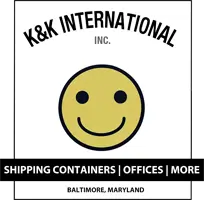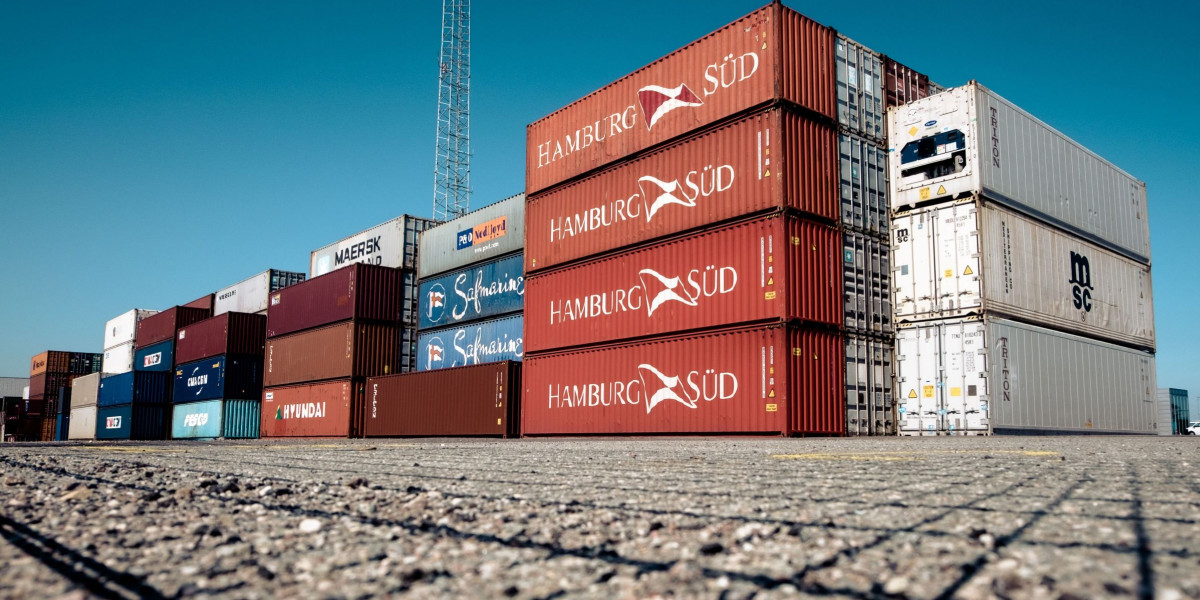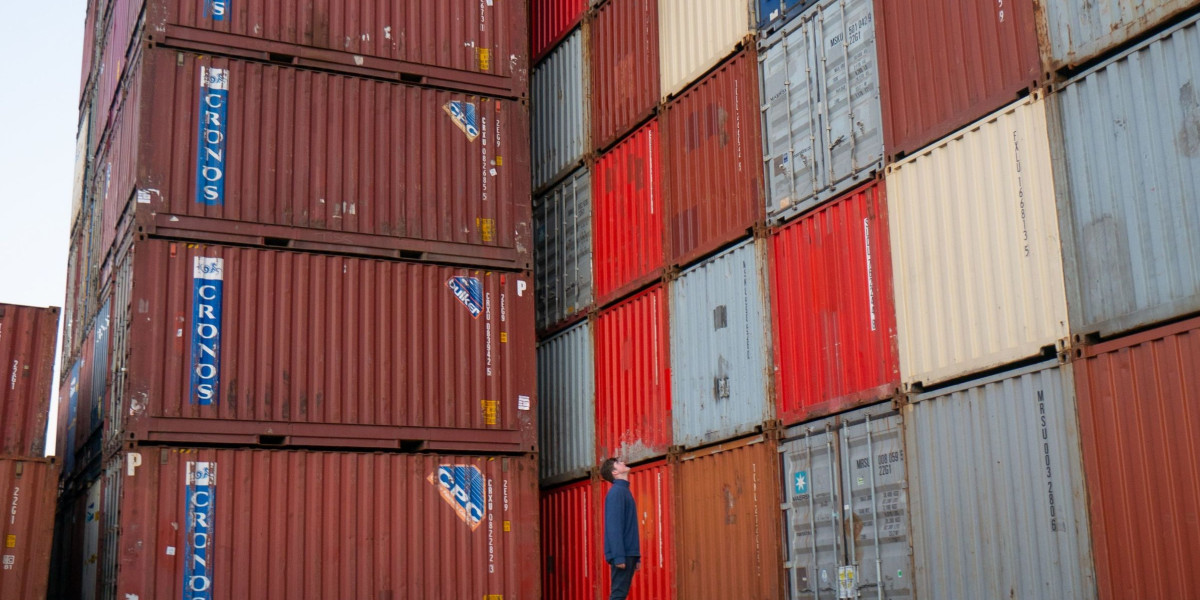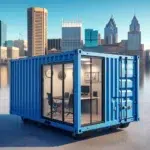Shipping container storage is a popular practice that involves repurposing shipping containers for various storage needs. Here we’ll explore the concept of shipping container storage, its benefits, different types of container storage solutions, how to choose the right container storage provider, tips for organizing and maximizing storage space, security measures, long-term storage considerations, environmental aspects, and real-world examples.
What Is Shipping Container Storage?
Shipping container storage is the practice of using shipping containers for secure and convenient storage purposes. These containers come in different sizes and configurations, ranging from 10 to 40 feet in length.
Made with durable materials such as steel, shipping containers are designed to withstand harsh weather conditions, ensuring the safety of stored items. They offer a flexible storage solution that can be used for both temporary and long-term storage needs.
Imagine a homeowner who needs extra storage space for seasonal items such as gardening tools, patio furniture, and holiday decorations. Instead of renting a costly storage unit, the homeowner decides to repurpose a shipping container in their backyard. This allows them to conveniently store and access their belongings while saving money in the long run.
Benefits of Using Shipping Containers for Storage
Using shipping containers for storage provides several advantages:
- High level of security: Shipping containers are built to be robust and offer a high level of security. Additionally, you can add extra security measures such as padlocks, security cameras, or alarms to further enhance the safety of your stored items. This gives you peace of mind knowing that your belongings are well-protected.
- Cost-effectiveness: Purchasing or renting a shipping container for storage can be more affordable compared to traditional storage options. It eliminates the need for ongoing rental fees, and you have full ownership and control over the container. This cost-effectiveness is particularly beneficial for individuals or businesses on a budget.
- Versatility: Shipping containers can be customized to meet specific storage needs. You have the flexibility to add shelves, partitions, or climate control systems, allowing you to accommodate different types of items. Whether you need to store household goods, inventory, or equipment, shipping containers provide a versatile solution.
- Portability: Shipping containers are designed for transportation, making them easily portable. If you need to relocate the container, it can be transported to a new location without much hassle. This flexibility is advantageous for individuals or businesses that require temporary storage or have changing storage needs.
Different Types of Container Storage Solutions
Various container storage solutions are available to suit different requirements:
- On-site storage: On-site storage involves placing the shipping container on your own property, providing convenient access to your stored items. This option is ideal for individuals or businesses that have enough space and want to have immediate access to their belongings.
- Off-site storage: Off-site storage refers to storing the container in a dedicated storage facility. This option offers additional security and services, such as surveillance systems, maintenance, and sometimes delivery options. Off-site storage is suitable for those who prioritize enhanced security and prefer professional management of their stored items.
- Self-storage facilities: Some self-storage facilities utilize shipping containers as individual storage units. These containers are modified to create separate compartments for rent. This option is great for individuals who require smaller storage spaces or want the convenience of a self-storage facility.
When choosing a container storage solution, it’s useful to consider factors such as space requirements, access frequency, and the need for specialized storage options. A business that needs to store temperature-sensitive products may opt for a container storage provider that offers climate-controlled containers.
On the other hand, an individual looking to store furniture during a home renovation project may prefer on-site storage for easy access.
How to Choose the Right Container Storage Provider
Selecting the right container storage provider is crucial to ensure the safety and convenience of your stored items. Here are some factors to consider:
- Reputation: Research the container storage provider’s reputation by reading customer reviews and testimonials. This will give you insights into the quality of their services and customer satisfaction.
- Location: Consider the location of your container provider. We’re based in Maryland but serve the greater surrounding metro areas in Virginia, West Virginia, and Delaware too.
- Additional services: Inquire about any additional services provided by the container storage provider. This may include insurance coverage, maintenance, and delivery options. These additional services can offer added convenience and peace of mind.
- Pricing and contract terms: Compare pricing structures and contract terms among different container storage providers to ensure affordability and flexibility. Consider the overall value offered by each provider.
5 Tips for Organizing and Maximizing Storage Space in Shipping Containers
Efficient organization and maximizing storage space are essential when utilizing shipping containers for storage. Here are five ways to achieve this:
- Utilize vertical space: Install shelves, racks, or hanging hooks to make the most of the vertical space within the container. By taking advantage of vertical storage, you can significantly increase the available space.
- Categorize and label: Categorize and label your stored items for easy identification and retrieval. This organizational strategy saves time and prevents the need to dig through multiple boxes to find what you’re looking for.
- Transparent storage containers: Consider using transparent storage bins or non-steel containers. This allows you to quickly locate specific items without the need to open multiple boxes. Transparent containers can be particularly helpful when storing items such as holiday decorations or seasonal clothing.
- Stackable storage solutions: Use stackable storage solutions to maximize space. Boxes or containers that can be neatly stacked on top of each other help optimize storage capacity. Additionally, make use of the space under furniture or stairs within the container for storage.
- Proper ventilation: Implement proper ventilation to prevent moisture buildup and potential damage to stored items. This can be achieved by ensuring adequate airflow within the container. Preventing moisture-related issues is crucial, especially in humid environments.
Security Measures for Shipping Container Storage
While shipping containers are inherently secure for storage purposes due to their sturdy construction, additional security measures can further enhance their safety. Consider the following measures:
- High-quality locks: Install high-quality locks or padlocks on the container doors to prevent unauthorized access. This adds an extra layer of security and helps deter potential theft.
- Additional security measures: Consider installing security cameras, alarms, or motion sensor lights to further deter potential theft. These measures can act as effective deterrents and provide added security to your stored items.
Long-Term Storage Considerations
When utilizing shipping containers for long-term storage, remember to consider the following:
- Preparation: Before storing items for the long term, ensure they are clean and free from dirt, moisture, or pests. Cleaning and preparing your items before storage helps maintain their condition over time.
- Proper packing materials: Use appropriate packing materials, such as plastic wrap or bubble wrap, to protect fragile items from damage. Proper packing prevents breakage or deterioration of sensitive items during storage.
- Moisture prevention: Consider using desiccant packs or moisture absorbers to prevent moisture-related issues, especially in humid climates. These products help maintain the optimal humidity level within the container and protect your stored items from mold or mildew.
- Regular inspections: Regularly inspect the container for any signs of damage, such as leaks or rust, and address them promptly. This proactive approach helps prevent further deterioration and ensures the container remains in good condition.
- Rotation of stored items: Periodically rotate stored items to prevent prolonged pressure on specific areas of the container. This helps distribute weight evenly and prevent damage to the container structure.
3 Environmental Considerations in Container Storage
Using shipping containers for storage offers several environmental benefits, too:
- Waste reduction: Repurposing shipping containers reduces waste by giving them a second life. Instead of being discarded, these containers find new purpose as storage solutions, minimizing the environmental impact associated with their disposal.
- Reduced carbon footprint: Utilizing existing structures like shipping containers instead of constructing brand new container yards and facilities helps reduce carbon emissions associated with new construction. By repurposing these containers, the need for additional resources and energy consumption is minimized.
- Eco-friendly practices: Some container storage providers may implement eco-friendly practices. This can include using renewable energy sources for facility operations or offering recycling programs for waste generated within the facility. These practices contribute to a more sustainable approach to storage.
Examples of Successful Container Storage Applications
Real-life examples demonstrate the practicality and benefits of using shipping containers for storage. Here are three real-world examples:
- Example 1: A restaurant owner decides to convert a shipping container into a walk-in cooler for storing fresh produce and ingredients. By doing so, they save costs on building a traditional walk-in cooler and have a flexible storage solution that can be easily relocated if needed. This demonstrates how shipping container storage can be customized to meet specific business needs while being cost-effective.
- Example 2: A family needs extra storage space during a home renovation project. They choose to rent a shipping container and have it placed on their property. This provides them with a secure and accessible storage solution, allowing them to keep their belongings nearby and easily accessible during the renovation process. This illustrates how on-site storage using shipping containers can be a convenient and practical option for homeowners.
- Example 3: A construction company requires a temporary storage solution for tools and equipment on a job site. They opt for a shipping container that can be transported to different locations as needed. This gives them the flexibility to have secure storage wherever their projects take them. This example showcases the portability and versatility of shipping container storage in commercial settings.
Ready to explore container options to meet your specific storage or project needs? Contact us now for a speedy and detailed quote.
Have questions before moving forward? Give our team a call and we’ll be happy to answer them!













